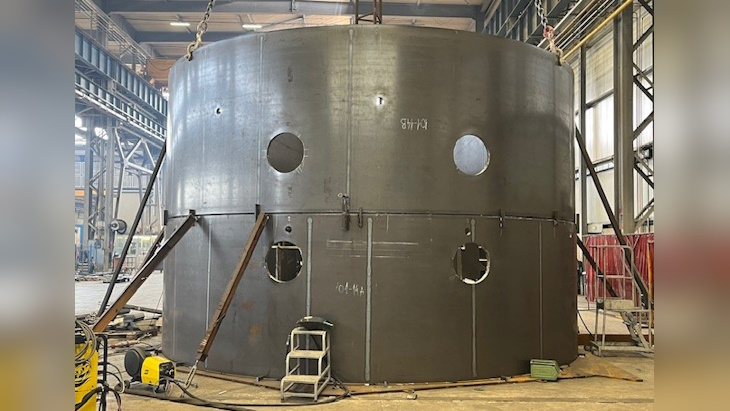As progress continues at the site for Ontario Power Generation’s Darlington New Nuclear Project (DNNP), a large tunnel boring machine, crucial for site preparations, has been christened “Harriet Brooks” in tribute to Canada’s first female nuclear physicist.
Harriet Brooks – A Pioneering Scientist
Harriet Brooks was a trailblazer in the field of nuclear physics. She was the first woman to receive a master’s degree from Montreal’s McGill University in 1901.
Her groundbreaking research included the discovery that elements could transform into other elements through radioactive decay.

Additionally, as a student, she was one of the early discoverers of the radioactive gas radon. Brooks collaborated with renowned scientists like Ernest Rutherford and Marie Curie and held various university positions throughout her career.
Tunnel Boring Machine’s Arrival and Purpose
The specialized excavating machine, also known as a ‘mole,’ is currently being manufactured in Europe. It will be instrumental in drilling the condenser cooling water tunnel path.
Although its arrival on site is anticipated next summer, the DNNP team has proactively completed a retaining wall for its launch shaft.
Project Updates and Timeline
In March, Ontario Power Generation (OPG) announced the timely and budget-compliant completion of early-phase works for the Darlington New Nuclear Project.
This milestone paved the way for the commencement of the main site preparation work, which has seen progress this summer with the initiation of drilling for the reactor building shaft retaining wall and the start of work on fabrication and pre-assembly buildings.
OPG has shared a video update showcasing the advancements made at the site.
Regulatory Hearings and Construction Commencement
The first part of the Canadian Nuclear Safety Commission’s hearings on OPG’s application for a license to construct the first unit is scheduled for September, with the second hearing planned for January.
Pending regulatory approval, OPG anticipates being ready to begin nuclear construction work in 2025.
The first SMR unit is projected to be in commercial operation by the end of 2029, with subsequent units expected to come online in the mid-2030s.
Naming the Machine
The team chose the name “Harriet Brooks” for the new tunnelling machine after receiving over 100 name submissions and conducting a vote. This follows the tradition of naming significant equipment after notable figures in the energy sector, such as “Big Becky,” a previous tunnel boring machine named in honor of Sir Adam Beck.